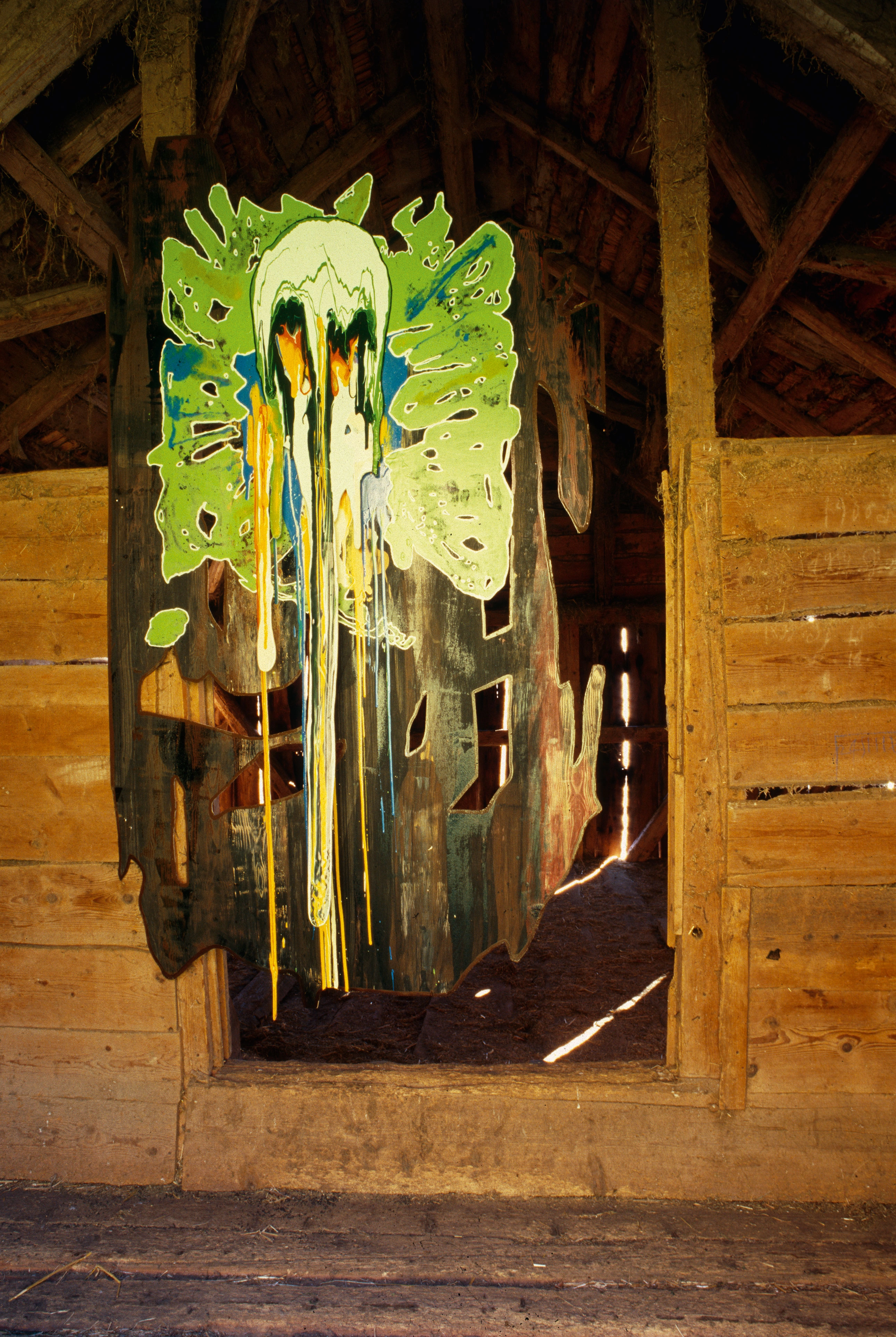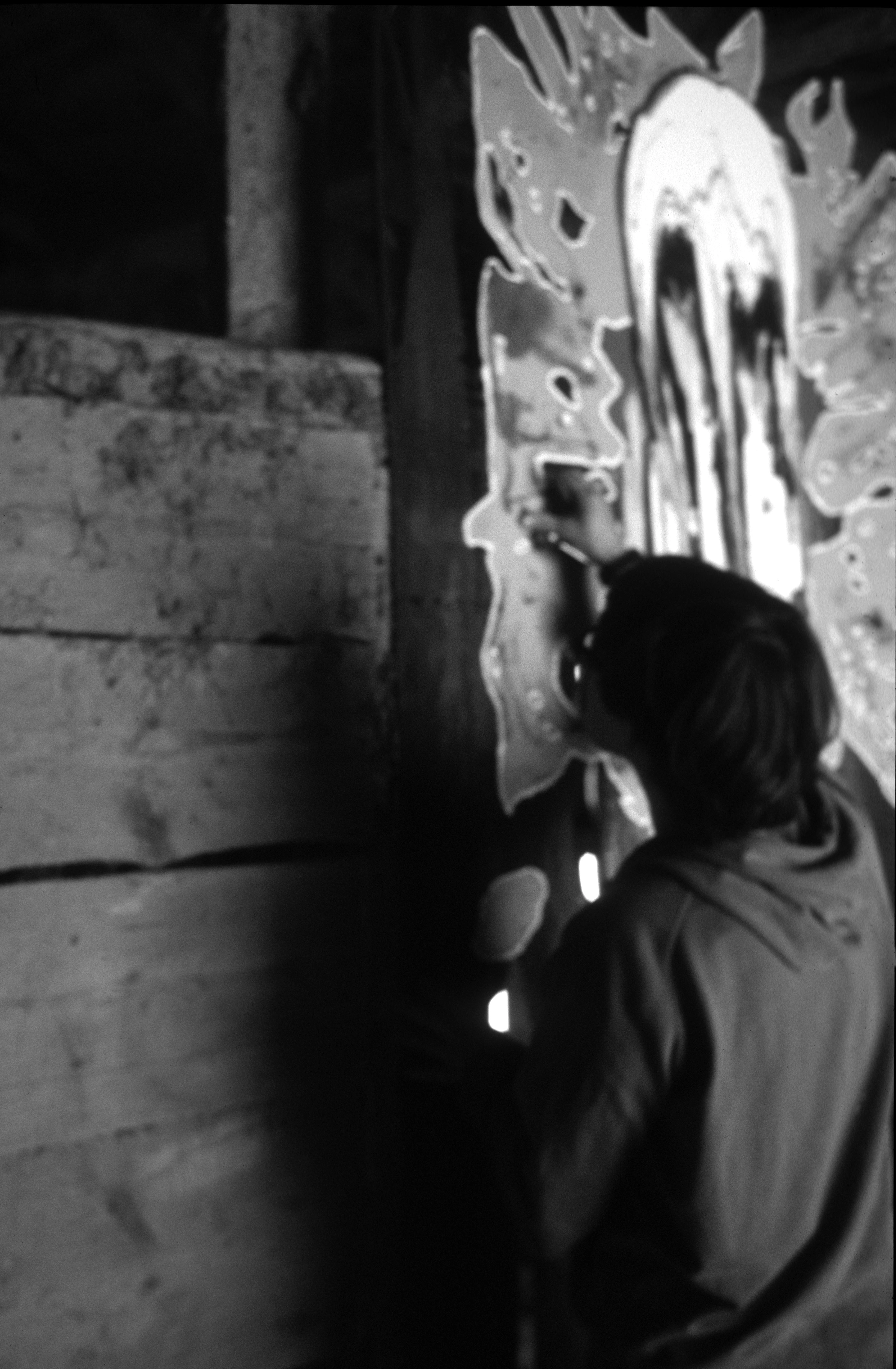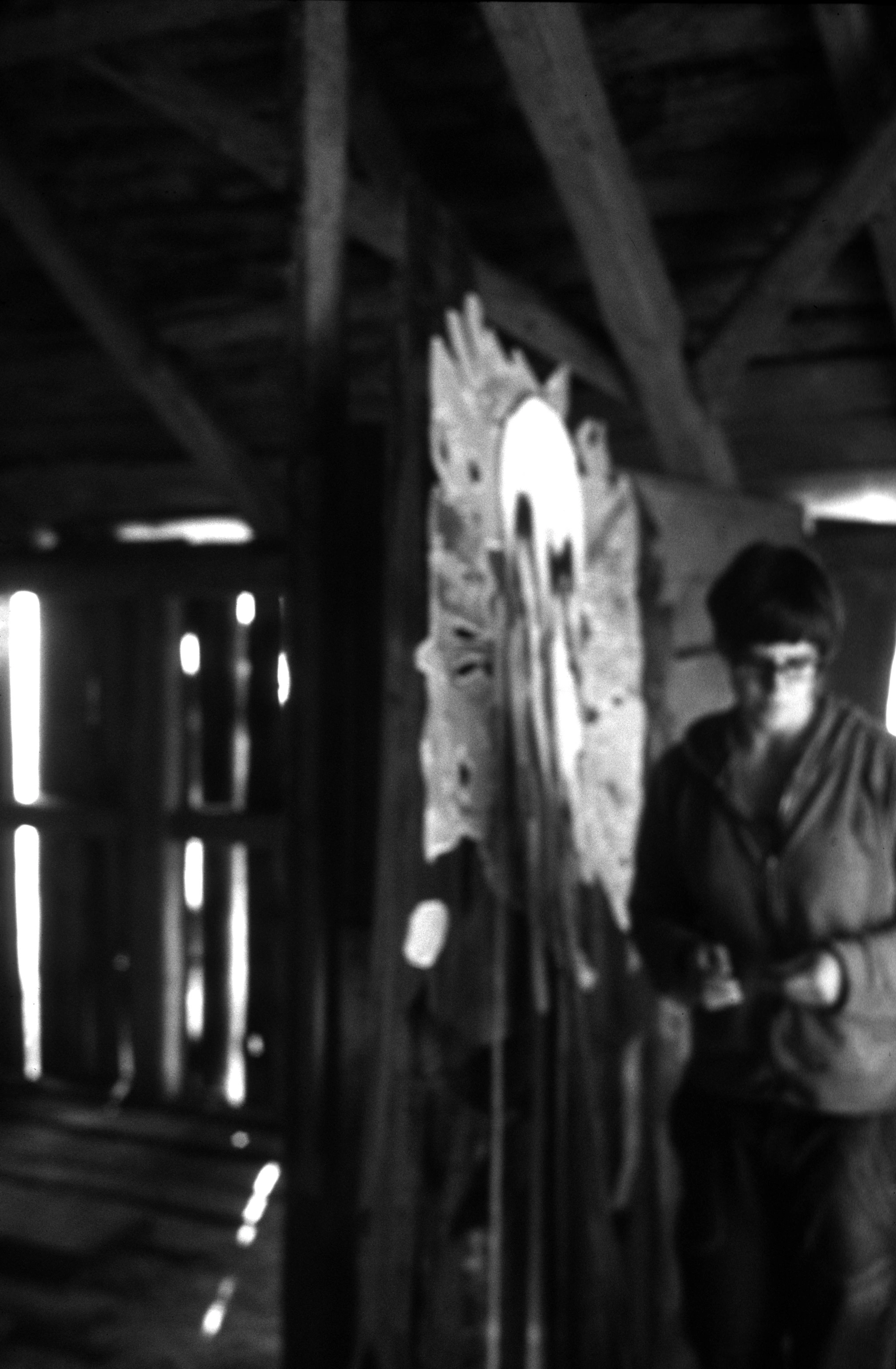The pictures that Christine Streuli paints, whether in small or very large formats, determine how we perceive them. Common to all of them is a painterly structure made up of multiple layers. Streuli works with symmetry, mirroring, and repetition. She uses mechanical means of duplication such as hand block printing, counterproofing and stencilling. Occasionally she uses existing stencils and templates, but as a rule she makes her own.
The shapes, transferred to paper, cardboard or wood, are cut out, mounted on the picture support and then painted over. This indirect procedure produces rigorously formalized images which are as distinctive as they are detached. Making a template is a process of transformation in which a shape, whether found or copied, is tightened up sufficiently to facilitate its duplication. The inaccuracies, mistakes and shifts that are an inevitable part of manual production are of particular interest to Streuli, not only because they yield visual surprises and expand the semantic spectrum of her work, but also because they demonstrate that originals can be made by using techniques of reproduction.
Thinking about the technical manufacture of these works belongs to our perception of them. The painting process is at once direct and filtered, spontaneous and detached, emotional and reflective. Such dichotomies are part of a code that applies not just to the finished painting; it is also a feature of each individual element and therefore crucial to an understanding of Streuli’s paintings in general. Since not even the brushstrokes and drops of paint have been painted, but are rather reproduced and thus treated as objects of painting, the works generate a heightened awareness of the artificiality of the picture. Lettering thus becomes a lacquer trail as well, yet conversely it is this lacquer trail that renders it legible. In addition, the contours of the shapes may resemble ornaments or refer to the syntax of graffiti or tattoos. What art historian Georges Didi-Huberman has to say about those Palaeolithic prints that use the hand as a stencil offers a telling insight into Streuli’s paintings today. He describes the impression of a hand in these works as the “touch of absence” and wonders whether the art of cave painting is about the presence or about the representation of human hands.1 He comes to the conclusion that it is neither, although it presupposes the presence of a hand and shows the outline of hands that have long ceased to exist. The imprint is a dialectical image that reveals both touch made visible and the absence of the touching agent. We almost inevitably associate the two-fold nature of artistic representation with the name and oeuvre of Andy Warhol, but many other artists — Frank Stella, Roy Liechtenstein, Sigmar Polke, and David Reed, to name but a few — have taken an affirmative approach to the language of signs in their artistic exploration of the relationship between original and imitation. Streuli’s paintings are representations of representation, and as such they sustain the discourse on painting.
In Amden, Streuli put up for debate a work that addresses light falling into a room, similar to Katharina Grosse’s earlier project in the same building. The shape and spatial layout of the red cardboard object that Grosse spray-painted in 1999 were determined by the light streaming into the stalls through the door, window and drain. For the hayloft above, Streuli designed an assemblage that she installed on the threshold to the room in front of the loft so that it would also function as a partition.
The picture faced the entrance opposite and was illuminated head-on. Openings cut into the painted wooden panel allowed visitors to perceive the backlight coming into the windowless room between the interstices in the raw planking of the walls. This light activated the painting, which was like a mask imitating what it covered up: planks, cracks of light, space. A second panel, cut out and lacquered, was mounted on the larger support; this patch of colour was the face of the painting and thus — in a reference to the technique — a mask of the mask, as it were.
– Roman Kurzmeyer
- Georges Didi-Huberman, Ähnlichkeit und Berührung: Archäologie, Anachronismus und Modernität des Abdrucks (La ressemblance par contact: Archéologie, anachronisme et modernité de l’empreinte), trans. Christoph Hollender, Köln: Dumont, 1999, p. 26.

 Images
Images
 Info
Info




 Next Exhibition
Next Exhibition